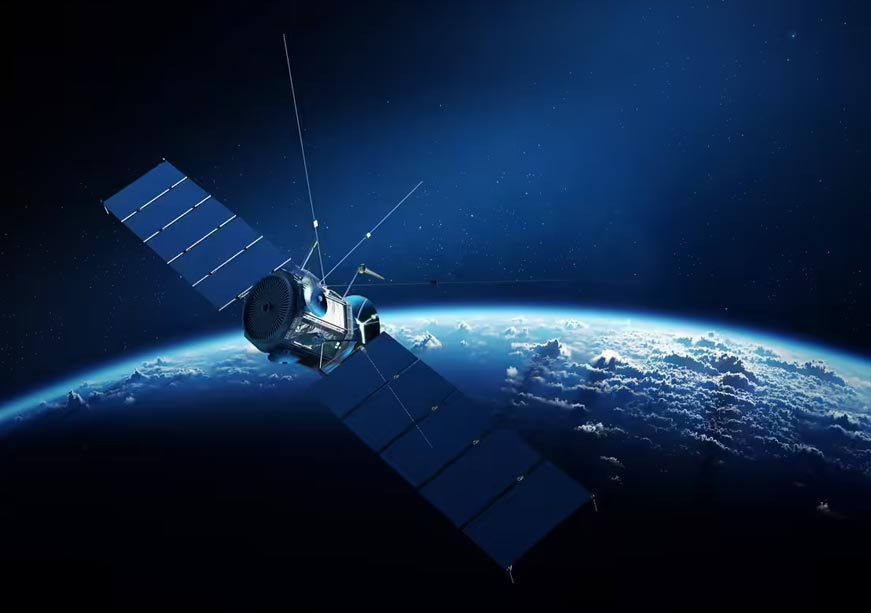-
CENTRES
Progammes & Centres
Location
India’s space ambitions need more than vision—they need hard data. A secure, indigenous space econometrics system is key to safeguarding growth.

The term ‘space economy’ was first introduced in the Union Budget speech of 2022, owing to its growing popularity in India. Given the strong indicators in favour of India’s economic forecasts, the Indian government, while using the same term, also publicly announced a target of achieving nearly 15 percent of the global space economy by 2047. However, there is no reason to believe that motivated and cascading global trade and supply chain upheavals, tariffs, and sanctions would not be directed at India, and there should not be any reason for Indian space economy plans to be affected by the retreat of countries that were long considered partners. Therefore, aside from the dynamicity of space diplomacy, the question remains: what concrete steps must be taken ahead to secure India's economic interests through its space programme?
One definite step must be towards creating a ‘domestic space econometric’ data-driven system - a dynamic Artificial Intelligence (AI)-and big-data driven computational and interactive graphical tool that computes and analyses econometric datasets, offers numerous projections, and identifies gaps in the space economy as well as breakout opportunities in areas where India has inherent strengths.
Firstly, it must be admitted that nearly all ‘space economy’ stakeholders in India—the government, consulting firms, industry bodies, and even think tanks—rely on a single space econometrics and statistics report. The only other reference point these stakeholders use, apart from U.S. sources, is the Annual Global Space Economy report published each year by the Virginia-based consulting firm BryceTech. Such consulting reports could serve as a citable reference for the firm's customers. However, the Indian government, which holds tremendous resources at its disposal, should effectuate indigenous economic analyses and not depend on such reports.
The Indian space programme, with its rapidly growing commercial facet, lacks a crucial element: dedicated econometric analytics for the highly diversified space sector.
There are reasons for the government to lead such analyses if the Indian space economy needs to be quantified. What is the real measure of India’s space economy? How much does India trade domestically, and what is the exact quantum and diversity of exports in terms of space-sector goods and services? The Indian space programme, with its rapidly growing commercial facet, lacks a crucial element: dedicated econometric analytics for the highly diversified space sector. There is an inherent issue. Unlike any commodity or sectoral product, such as petroleum or textiles, the trade of space-related goods encompasses a wide range of products. These include—electronics, materials, chemicals, fuels, engines, cameras, specialised instruments, mechanised and electrical systems and components, metals and alloys, and specialised software, among others. If India were to truly measure its ‘space economy’, such measurements would have to factor in econometric analysis that spans across several Harmonised System (HS) codes.
The World Customs Organisation maintains an exhaustive list of nearly 5,600 HS codes that classify and catalogue traded goods within them. The WCO updates this list every six years to accommodate new and notable traded goods and services. No single HS code is capable of providing a comprehensive lay of the ‘space economy’ landscape, rendering the space economy metric system rather cumbersome. For instance, the most apparent HS code for the space sector is HS Chapter 88, which enlists ‘aircraft, spacecraft, and parts thereof’. Most codes within the 88 chapter are dedicated to aircraft parts. Only one six-digit code—HS 880260—denotes “spacecraft (including satellites and suborbital), spacecraft launch vehicle.” The prime constituent of any Earth-observation satellite is its space-grade camera. Such cameras cannot be classified under HS 880260. Instead, they fall under HS 852582, which covers television cameras, digital cameras, and video camera recorders, as well as other radiation-hardened or radiation-tolerant goods. Similarly, HS 90 would include several payloads. For instance, graphite that goes underneath a human-rated space capsule would fall under HS 38; the solid rocket fuel hydrazine under HS 29; and analytical instruments constituting space exploration payloads under HS 90, and many more.
India’s space innovation and industrial ecosystem must be prepared to withstand supply chain disruptions and supply denials.
India would also need to measure both domestic and international trade to supplement this highly diversified economy. Domestically, it is important as states seek metrics on their space-sector manufacturing—especially now that most have a dedicated space policy in place. On the international front, space supply chains require more effective measurement, considering several long-standing international suppliers of the Indian space sector would intend to exert leverage by restricting their supplies. India’s space innovation and industrial ecosystem must be prepared to withstand supply chain disruptions and supply denials.
Against this backdrop, the government must design and possess a big-picture space econometrics dashboard in its custody. This is necessary to ensure three contingencies.
In contemporary times, the progress of a cross-sectoral domain such as space, is to be measured by comprehending the manufacturing and economic output not only in geographic clusters - Hyderabad, Bengaluru, Ahmedabad, Chennai, Pune, or in technology clusters - geospatial, satellite, spacecraft, launch vehicles, satellite communications, but also many in the space ecosystem’s value chain that do not get counted. Measuring the space economy would also include non-classical space companies, such as those in the information communication technology sector, fuels and speciality chemicals, advanced materials, semiconductors and electronics, and metals and alloys, which indirectly contribute to India’s space economy output.
The Indian goal of achieving 15 percent of the global space economy by 2047 is only possible through the development of a secure and government-made scientifically rationalised econometrics
It would also entail the economic output of individual space services-driven startups, small and medium enterprises (SMEs) and big corporations. In the latter case, the output would only constitute one variable for the investors to determine the worth of their investments. At this point, in the absence of any indigenous or wholly-Indian space econometrics effort, the Indian space ecosystem is inching towards a semi-blind valuation game. This bubble could burst if scientifically rationalised measurements are not put in place. The Indian goal of achieving 15 percent of the global space economy by 2047 is only possible through the development of a secure and government-made scientifically rationalised econometrics, and the first step is to identify the wide gamut of technologies that fit into the 5,600+ HS codes. To that end, the Ministry of Finance and the Ministry of Commerce have a larger role in the Indian Space Programme. Nonetheless, this could be actualised only if they rope in Indian institutions and not bring in consulting firms, which would defeat the purpose.
Chaitanya Giri is a Fellow at the Centre for Security, Strategy, and Technology (CSST) at the Observer Research Foundation.
The views expressed above belong to the author(s). ORF research and analyses now available on Telegram! Click here to access our curated content — blogs, longforms and interviews.

Dr. Chaitanya Giri is a Fellow at ORF’s Centre for Security, Strategy and Technology. His work focuses on India’s space ecosystem and its interlinkages with ...
Read More +